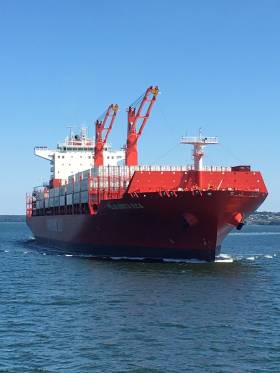Displaying items by tag: Ringaskiddy Container Terminal
Irish Built Liebherr Cranes for Port of Cork
#PortofCork - A significant deal has been signed by Liebherr Container Cranes to supply two large gantry cranes to the Port of Cork.
The twin cranes reports The Kerryman will be located at the new container terminal at Ringaskiddy - will be designed and built at Liebherr's plant in Killarney and are due to be delivered to the Port of Cork by April 2020.
Director of Liebherr Container Cranes Pat O'Leary welcomed the deal. "We are delighted to have received this order and to continue our long-standing relationship with the Port of Cork," said Mr O'Leary.
"In the 1970s, Liebherr Container Cranes supplied the first ship to shore container cranes to the port. Since that time we have supplied further cranes, including two grab cranes; two STS cranes in 1991 and 1999; as well as a rubber tyre gantry crane, all of which continue to be key elements of the port's infrastructure".
He added "The signing of a contract for the supply of two new state-of-the-art STS cranes will help drive port productivity and boost business, not only in Cork, but also throughout Ireland."
Afloat adds these STS, ship to shore cranes are also the same type of infrastructure assembled in Cork Dockyard earlier this year and carried as deck cargo for clients ABP's Port of Hull.
As for Cork's new €80m Container Terminal, construction began in June. The project is also to feature a new public marine leisure amenity at Paddy’s Point in addition a €1m community gain fund for the Ringaskiddy area.





























































